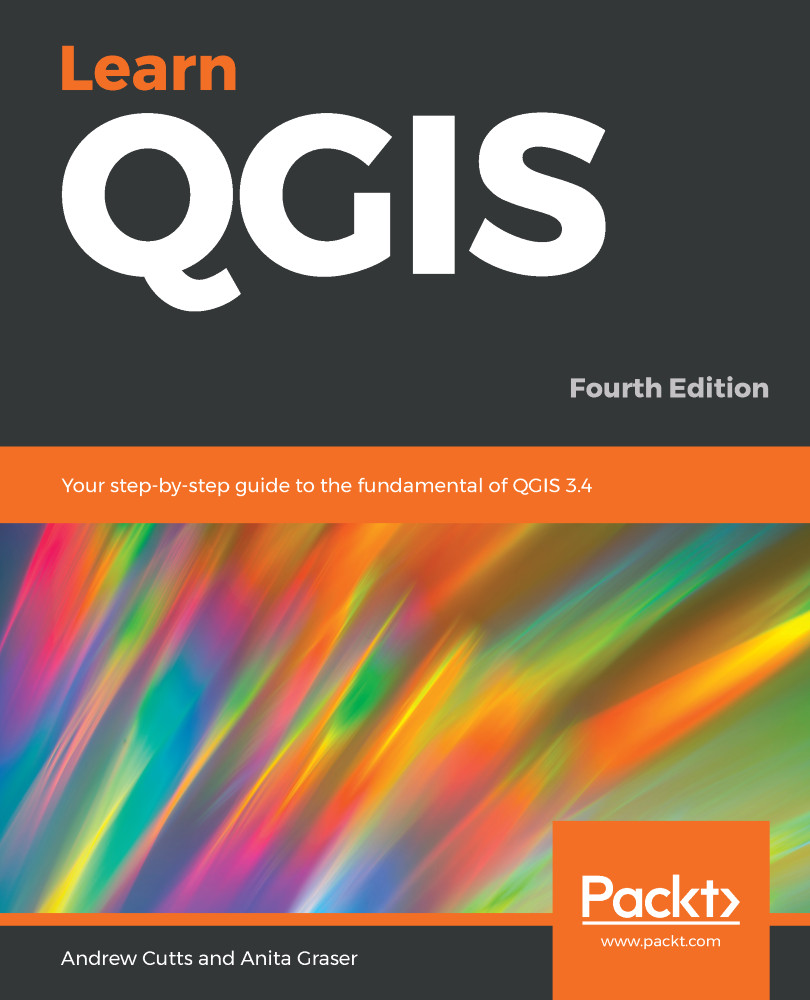At the core of any GIS is data. Without it, we cannot create maps or perform spatial analysis. In this chapter, we will load, edit, and create data. We will look at the large range of formats and types and how QGIS 3.4 helps us to work with them.
If you are familiar with GIS, then you will already know that we often work with vector data, namely points, lines, polygons, and raster data, as pixels. Vector and raster data are the core data types that we use in a GIS. However, text files, databases, and web services can also be integrated into GIS. We can use a location associated with a file (such as a coordinate), or we can perform joins to extend or spatially enable our existing data.
In this chapter, we will explore all of the data options in QGIS. The topics covered in this chapter are as follows:
- Data formats
- Loading data
- Interacting with data
- Vector...


